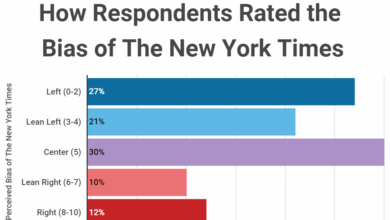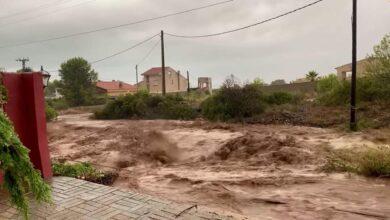War and Climate Change Are Overwhelming Somalia
War and climate change are overwhelming Somalia, pushing its people to the brink. This isn’t just a story of conflict and drought; it’s a complex tapestry woven from decades of instability, exacerbated by the escalating effects of a changing climate. We’re talking about failing harvests, mass displacement, and the rise of extremism – all intertwined in a devastating feedback loop.
This post dives into the heart of this crisis, exploring how war and climate change are mutually reinforcing, creating a humanitarian catastrophe of epic proportions.
The impact is multifaceted. War destroys infrastructure vital for climate resilience – think water systems and farmland. Displacement caused by fighting leaves people vulnerable to drought and famine. Simultaneously, climate change itself fuels conflict, intensifying competition for scarce resources and pushing already fragile communities over the edge. The international community’s response, while substantial, faces enormous challenges in reaching those most in need.
The Impact of War on Climate Change Vulnerability in Somalia
Somalia’s vulnerability to climate change is significantly exacerbated by ongoing conflict. Decades of instability have weakened the country’s resilience, leaving its population acutely susceptible to the impacts of drought, floods, and other climate-related hazards. The interplay between war and climate change creates a vicious cycle, where each intensifies the negative effects of the other, leading to a humanitarian crisis of immense proportions.
Displacement and Resource Access
War-induced displacement severely limits access to essential resources needed for climate change adaptation. Millions of Somalis have been internally displaced due to conflict, often fleeing to areas with limited water, food, and shelter. These displacement camps are frequently located in environmentally fragile regions, further straining already scarce resources and increasing vulnerability to climate shocks. For instance, the displacement of pastoralist communities due to Al-Shabaab activity has disrupted traditional grazing patterns, leaving them with fewer options to cope with drought.
The lack of access to clean water, sanitation, and healthcare in displacement camps also increases susceptibility to waterborne diseases, which are often exacerbated by climate-related flooding.
Destruction of Critical Infrastructure
War-related destruction significantly compromises infrastructure crucial for climate resilience. The deliberate targeting or collateral damage to water systems, irrigation networks, and agricultural lands directly undermines Somalia’s capacity to adapt to climate change. Damaged water infrastructure limits access to clean water, hindering agricultural production and increasing the risk of drought-related famine. The destruction of agricultural lands reduces food production, leaving communities more reliant on external aid and increasing their vulnerability to food insecurity during periods of drought.
For example, the destruction of irrigation systems in the Shabelle River basin has drastically reduced agricultural yields, leaving many farmers destitute and vulnerable to the impacts of climate change.
Exacerbation of Existing Climate Vulnerabilities, War and climate change are overwhelming somalia
Ongoing conflict directly exacerbates existing climate vulnerabilities in Somalia. The disruption of livelihoods, the destruction of infrastructure, and the displacement of populations weaken the country’s capacity to respond to climate-related shocks. This leads to increased food insecurity, water scarcity, and disease outbreaks, disproportionately affecting vulnerable populations such as women, children, and the elderly. The limited access to early warning systems and disaster relief further complicates the situation, increasing the severity of the humanitarian consequences.
For instance, the ongoing conflict in the south and central regions of Somalia has hampered the delivery of humanitarian aid, making it difficult to provide assistance to those affected by drought and famine.
Somalia’s facing a double whammy: relentless war and devastating climate change. It’s a humanitarian crisis of epic proportions, and it makes you wonder about global priorities. Meanwhile, reading about how China’s leaders face miserable economic growth figures highlights how even powerful nations grapple with immense challenges. The contrast underscores the urgent need for international cooperation to address crises like Somalia’s, before they become insurmountable.
| Type of Conflict | Impact on Climate Vulnerability | Affected Population Group | Mitigation Strategies |
|---|---|---|---|
| Internal armed conflict (e.g., Al-Shabaab insurgency) | Displacement, destruction of infrastructure (water systems, agriculture), disrupted livelihoods, limited access to resources | Rural communities, pastoralists, internally displaced persons (IDPs) | Peacebuilding initiatives, infrastructure rehabilitation, conflict-sensitive development programs, improved early warning systems |
| Clan-based violence | Resource competition, displacement, disruption of agricultural practices, limited access to aid | Rural communities, pastoralists, IDPs | Conflict resolution mechanisms, community-based natural resource management, support for peaceful coexistence |
| Terrorist attacks | Destruction of infrastructure, disruption of aid delivery, displacement, fear of accessing resources | Urban and rural populations, IDPs | Enhanced security measures, protection of humanitarian workers, improved resilience of infrastructure |
| Political instability | Weak governance, limited capacity for climate change adaptation, delayed or inadequate response to climate shocks | Entire population | Strengthening governance structures, capacity building, improved coordination of humanitarian response |
The Impact of Climate Change on Conflict and Instability in Somalia: War And Climate Change Are Overwhelming Somalia
Somalia, already grappling with decades of conflict and weak governance, faces a compounding crisis amplified by climate change. The effects of a warming planet are not merely environmental; they are deeply intertwined with the country’s persistent instability, exacerbating existing vulnerabilities and creating new avenues for conflict. The interaction between climate change and conflict is complex and multifaceted, creating a vicious cycle that hinders development and undermines peacebuilding efforts.Drought and Famine as Drivers of ConflictRecurring droughts, intensified by climate change, are a major catalyst for conflict in Somalia.
Prolonged periods without rain lead to widespread crop failure and livestock deaths, resulting in severe food shortages and famine. This resource scarcity triggers competition for dwindling resources, often escalating into violent clashes between pastoralist communities vying for access to scarce water and grazing land. The desperation born from hunger and displacement fuels resentment and increases the likelihood of conflict, with communities resorting to violence to secure their survival.
The 2011 famine, for example, was exacerbated by drought and conflict, leading to a humanitarian crisis of immense proportions.Climate-Induced Migration and Resource CompetitionClimate change is forcing mass displacement within Somalia, as people abandon their homes and livelihoods in search of food, water, and safety. This climate-induced migration intensifies existing tensions and competition for resources in already strained areas.
The influx of climate migrants places additional pressure on limited resources, leading to increased competition for land, water, and employment opportunities. This competition can spark conflict between established communities and newly arrived migrants, further destabilizing the region. We’ve seen this play out repeatedly in Somalia, where competition for dwindling resources in urban centers has led to tensions and violence.Climate Change and the Rise of Extremist GroupsThe conditions created by climate change – drought, famine, displacement, and weak governance – are fertile ground for the recruitment and expansion of extremist groups.
These groups often exploit the vulnerabilities of marginalized and displaced communities, offering them protection, resources, or a sense of belonging in exchange for loyalty. The desperation caused by climate-related disasters makes individuals more susceptible to extremist ideologies and recruitment efforts, further undermining state authority and exacerbating instability. The weakening of state capacity to provide basic services, a consequence of both conflict and climate change, creates a power vacuum that extremist groups readily fill.Factors Contributing to InstabilityThe following points highlight the interconnectedness of climate change and conflict in Somalia.
These factors, while distinct, often interact and reinforce one another, creating a complex and challenging situation.
- Increased competition for land, water, and pasture: As resources become scarcer due to drought and desertification, competition intensifies, leading to clashes between communities and exacerbating existing land disputes.
- Displacement and migration: Climate-induced displacement creates pressure on host communities, leading to increased competition for resources and potentially sparking conflict.
- Weakened governance: The inability of the state to effectively manage resources, provide essential services, and address the needs of displaced populations creates a power vacuum that can be exploited by armed groups.
- Increased vulnerability to exploitation: Marginalized and displaced communities, already struggling to survive, are particularly vulnerable to exploitation by extremist groups offering them assistance or protection in exchange for loyalty.
International Aid and Humanitarian Response in Somalia
Somalia’s enduring conflict and escalating climate vulnerability necessitate a multifaceted international aid response. The sheer scale of humanitarian needs, coupled with the complex interplay of war and environmental shocks, presents significant challenges for aid organizations and necessitates a critical evaluation of current strategies and a reimagining of future interventions.
Somalia’s facing a brutal double whammy: relentless war and devastating climate change. It’s heartbreaking to see the suffering, and it makes you wonder about global priorities. I was reading this article, why does donald trump have the momentum in the presidential race , and it struck me how seemingly distant political battles can overshadow urgent humanitarian crises like the one unfolding in Somalia.
We need to find a way to focus on both, because the human cost in Somalia is simply unacceptable.
International aid efforts in Somalia address both the immediate consequences of war and the long-term impacts of climate change through various channels. These include emergency relief, development assistance, and peacebuilding initiatives. Emergency relief focuses on providing immediate life-saving assistance such as food, water, shelter, and medical care to those affected by conflict and natural disasters. Development assistance aims to build resilience and foster long-term sustainable development by investing in infrastructure, education, healthcare, and economic opportunities.
Peacebuilding initiatives aim to address the root causes of conflict and promote reconciliation and stability.
Effectiveness of Different Humanitarian Aid Approaches
Different humanitarian aid approaches vary in their effectiveness in mitigating the combined effects of war and climate change. Emergency relief, while crucial in saving lives during crises, often lacks the long-term focus needed to build resilience against future shocks. Development assistance, on the other hand, can contribute to building resilience, but may not be sufficient to address the immediate needs during crises.
Integrated approaches that combine emergency relief with development and peacebuilding initiatives are often more effective in achieving sustainable and long-lasting results. For instance, programs that simultaneously provide food aid and support climate-resilient agricultural practices demonstrate a more comprehensive approach. Similarly, initiatives that link conflict resolution with environmental management can create a more sustainable peace.
Challenges Faced by Aid Organizations
Aid organizations face numerous challenges in delivering assistance in conflict-affected and climate-vulnerable areas of Somalia. These include insecurity, logistical difficulties, access restrictions, corruption, and coordination challenges among various actors. Insecurity significantly hampers the delivery of aid, as armed groups may impede access to vulnerable populations or target aid workers. Logistical challenges, such as poor infrastructure and inadequate transportation networks, make it difficult to reach remote and affected areas.
Access restrictions imposed by warring factions or authorities can further limit the reach of aid organizations. Corruption can divert resources intended for beneficiaries, undermining the effectiveness of aid programs. Finally, the lack of effective coordination among various aid organizations can lead to duplication of efforts and inefficient use of resources.
A Plan for Improved International Aid
To better address the interconnected challenges of war and climate change in Somalia, international aid should adopt a more integrated and holistic approach. This approach should focus on the following key elements:
Firstly, strengthening local capacity building is crucial. This involves empowering local communities and organizations to take ownership of their development and disaster risk reduction efforts. This includes providing training and resources to local communities to enhance their capacity to manage resources sustainably and respond effectively to climate-related shocks.
Somalia’s facing a double whammy: devastating war and worsening climate change. It’s a humanitarian crisis of immense proportions, and while the world grapples with these issues, it’s interesting to contrast this with the US political landscape, where debates like Senator Rick Scott’s push for mental health solutions over gun confiscation, as discussed in this article sen rick scott on gun control push focus on mental health not taking guns from law abiding citizens , highlight different priorities.
The scale of suffering in Somalia, though, makes you wonder what truly constitutes a national emergency.
Secondly, investing in climate-resilient infrastructure is paramount. This entails building infrastructure that can withstand the impacts of climate change, such as drought-resistant crops, improved water management systems, and early warning systems for extreme weather events. For example, investing in improved irrigation systems and drought-resistant seed varieties can significantly enhance agricultural productivity and reduce vulnerability to drought.
Thirdly, promoting peacebuilding and conflict resolution is essential. This involves addressing the root causes of conflict and supporting initiatives that promote reconciliation and stability. This could include supporting community-based conflict resolution mechanisms and promoting inclusive governance structures. For example, initiatives that bring together warring factions to jointly manage natural resources can foster cooperation and reduce conflict over scarce resources.
Finally, improving coordination and accountability among aid actors is vital. This includes establishing clear mechanisms for coordination among different aid organizations, government agencies, and local communities. Transparent and accountable systems for managing and distributing aid resources are crucial to ensure that assistance reaches those who need it most and is used effectively.
Long-Term Strategies for Building Resilience in Somalia
Somalia faces a daunting challenge: building resilience against the intertwined threats of war and climate change. The country’s vulnerability is deeply rooted in decades of conflict, coupled with the escalating impacts of drought, floods, and desertification. Long-term strategies are crucial, moving beyond immediate humanitarian aid to foster sustainable development and self-reliance. This requires a multifaceted approach encompassing environmental protection, economic diversification, good governance, and strengthened social safety nets.Successful long-term resilience strategies in other conflict-affected and climate-vulnerable regions offer valuable lessons.
These strategies often emphasize community-led initiatives, investment in early warning systems, and the promotion of climate-smart agriculture. Adapting these successful models to the Somali context demands careful consideration of the unique political, social, and environmental realities on the ground.
Examples of Successful Long-Term Strategies in Other Regions
Several regions have demonstrated success in building resilience. For instance, in Rwanda, post-genocide reconstruction efforts prioritized community-based development projects, focusing on agricultural diversification and improved infrastructure. This fostered economic growth and reduced vulnerability to environmental shocks. Similarly, initiatives in Bangladesh, focusing on cyclone preparedness and the development of resilient infrastructure, have significantly reduced casualties and economic losses from natural disasters.
These examples highlight the importance of investing in long-term infrastructure, capacity building, and community participation.
Adapting Successful Strategies to the Somali Context
Adapting these models to Somalia requires a nuanced approach. Rwanda’s community-based development model could be adapted by supporting existing traditional governance structures and empowering local communities to manage resources sustainably. Similarly, Bangladesh’s early warning systems could inspire the development of drought and flood monitoring systems tailored to Somalia’s specific geographical conditions. This includes integrating local knowledge with modern technology for effective early warning dissemination and community-level response.
Investment in drought-resistant crops and water harvesting techniques is critical, addressing the immediate needs while building long-term food security.
The Importance of Community Participation and Local Ownership
Community participation and local ownership are paramount to building lasting resilience. Top-down approaches have often failed in Somalia due to a lack of trust in external actors and limited community engagement. Empowering local communities to identify their priorities, manage resources, and participate in decision-making processes is essential. This fosters a sense of ownership and ensures that resilience-building efforts are relevant and sustainable.
Furthermore, incorporating traditional knowledge and practices into modern approaches can increase their effectiveness and acceptance within communities.
Key Elements of a Long-Term Resilience Strategy for Somalia
| Element | Government Role | International Community Role | Local Community Role |
|---|---|---|---|
| Environmental Management | Develop and enforce environmental policies; invest in sustainable land management practices | Provide technical assistance and funding for environmental projects; support capacity building | Participate in resource management; adopt sustainable practices; monitor environmental changes |
| Economic Diversification | Promote investment in non-agricultural sectors; create jobs; improve infrastructure | Provide financial and technical support for economic development projects; promote fair trade | Develop and implement income-generating activities; participate in market development |
| Governance and Peacebuilding | Strengthen governance institutions; promote reconciliation; uphold the rule of law | Support peacebuilding initiatives; promote good governance; strengthen state capacity | Participate in conflict resolution mechanisms; engage in peaceful co-existence |
| Social Safety Nets | Develop and implement social protection programs; provide emergency relief | Provide financial and technical support for social protection programs; coordinate humanitarian assistance | Participate in program design and implementation; access and benefit from programs |
The Role of Climate Change in Shaping the Narrative of War in Somalia
The devastating impact of climate change on Somalia’s already fragile environment has profoundly altered the narrative of its ongoing conflicts. The interplay between environmental degradation, resource scarcity, and existing political and social tensions creates a complex web where climate change is not simply a backdrop but a powerful force shaping the conflict’s trajectory and justifications. Understanding this intricate relationship is crucial to developing effective strategies for peace and resilience.Climate change narratives are frequently utilized, both legitimately and manipulatively, to justify conflict or advance specific political agendas in Somalia.
The Instrumentalization of Climate Change Narratives
Certain actors may exploit the effects of climate change—droughts, floods, and displacement—to garner support for their cause, incite violence against rival groups, or deflect responsibility for existing conflicts. For instance, a clan vying for control over scarce water resources might portray their actions as necessary to protect their community from the devastating effects of drought, even if those actions involve violent conflict with neighboring groups.
Conversely, the government might downplay its role in environmental mismanagement by framing the resulting crises as purely climate-related, thereby avoiding accountability for its own actions. Such strategic uses of climate narratives obfuscate the complex realities of the conflict, hindering efforts towards lasting peace.
Media Framing of Climate Change Impacts in the Somali Conflict
Media coverage of the conflict often presents climate change as a contributing factor, but the framing can vary significantly. Some reports may emphasize the direct causal link between environmental degradation and conflict, highlighting how resource scarcity fuels violence. Others might downplay the role of climate change, focusing instead on pre-existing political grievances or tribal tensions. This uneven framing reflects the complex nature of the conflict and the diverse perspectives of actors involved.
The lack of consistent and nuanced reporting can lead to a simplified understanding of the issue, potentially hindering effective responses.
Exacerbation of Social Inequalities and Power Dynamics
Climate change disproportionately impacts the most vulnerable populations in Somalia, exacerbating existing social inequalities and power dynamics. Marginalized communities, often lacking the resources to adapt to environmental changes, are disproportionately affected by drought, displacement, and resource scarcity. This vulnerability can be exploited by armed groups, who might offer protection or assistance in exchange for loyalty or resources, further entrenching existing power imbalances and fueling the conflict.
The unequal distribution of resources and the uneven capacity to cope with climate change create fertile ground for conflict and instability.
Visual Representation of War and Climate Change Interconnectedness
Imagine a photograph: a parched, cracked earth stretches as far as the eye can see, devoid of vegetation. In the foreground, a group of emaciated people huddle around a nearly empty water container, their faces etched with desperation. In the background, a distant plume of smoke rises from a burning village, a subtle yet powerful symbol of conflict.
The cracked earth represents the devastating impact of drought, a direct consequence of climate change. The desperate people represent the vulnerability of those most affected by environmental degradation. The smoke in the distance symbolizes the violence and conflict that often arises from resource scarcity and displacement. This image powerfully encapsulates the interconnectedness of war and climate change in Somalia; it is a visual representation of how environmental vulnerability fuels conflict and instability, highlighting the human cost of this complex crisis.
The situation in Somalia serves as a stark warning: war and climate change are not isolated problems; they’re deeply interconnected threats that demand integrated solutions. While the challenges are immense, hope remains. By understanding the complex interplay between these forces, and by focusing on long-term resilience-building strategies that prioritize community involvement, we can help Somalia navigate this crisis and build a more sustainable future.
It requires a concerted global effort, a commitment to long-term investment, and a recognition that the fate of Somalia is inextricably linked to our own.






